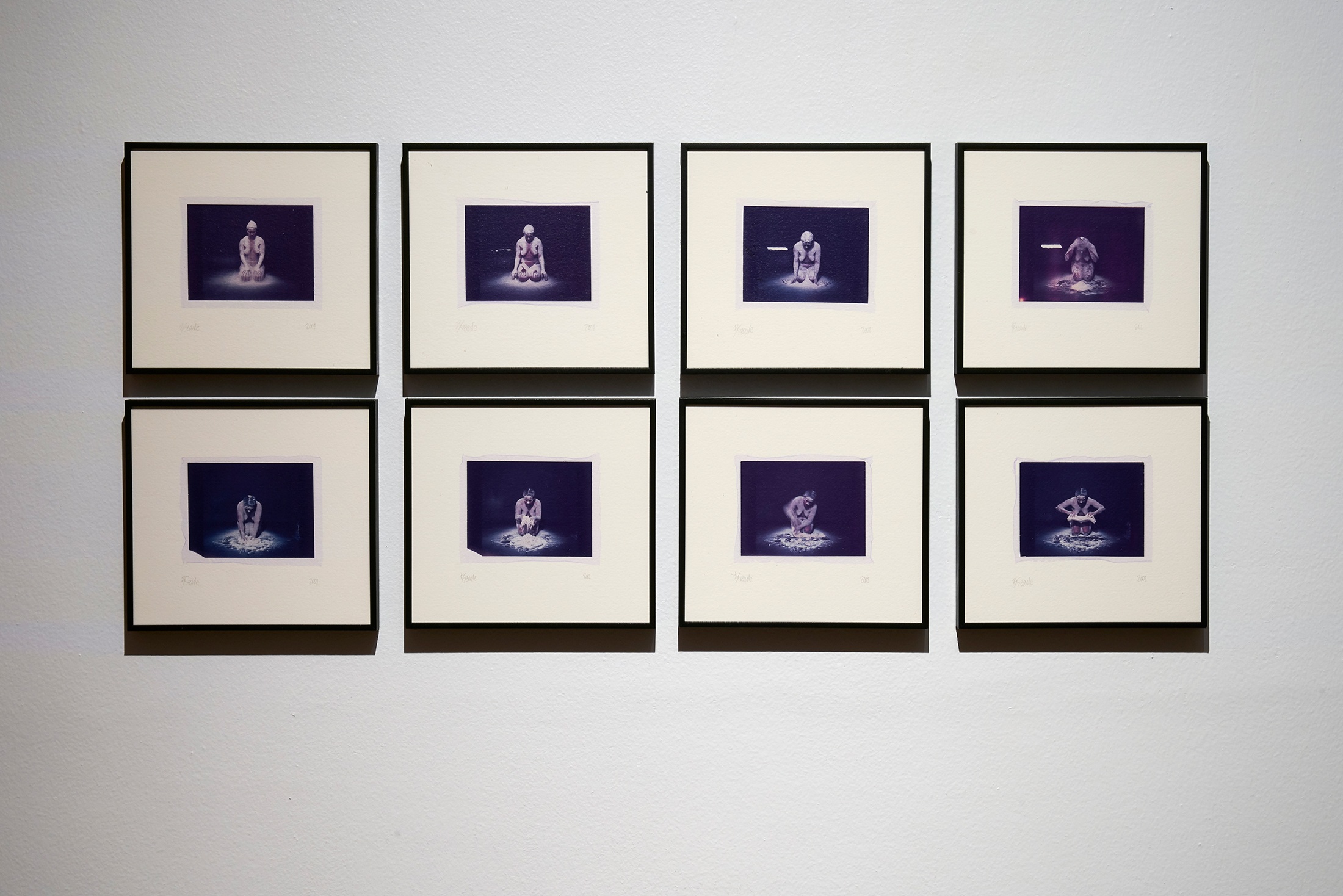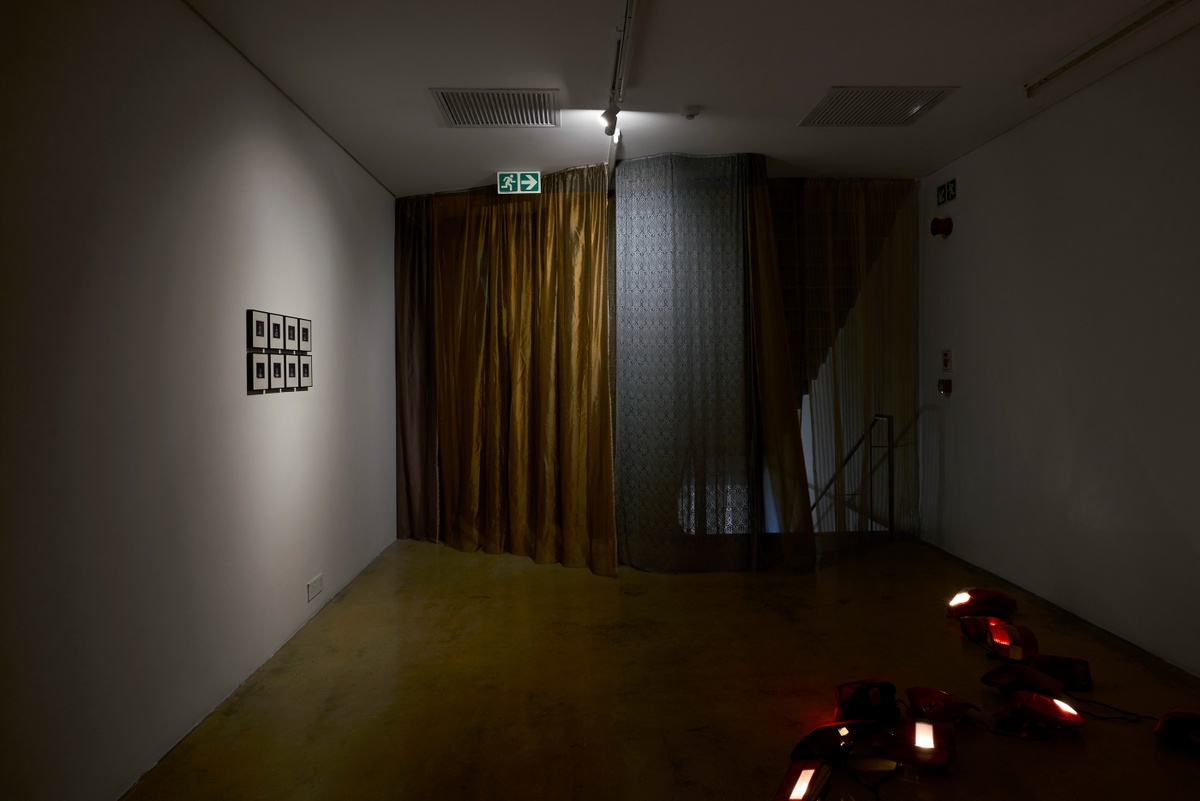Berni Searle

Still is a series of Polaroid photographs collected into panels, which serve as both maquette and original for what became the performance installation by the same name: the Polaroid transfers were scanned and enlarged onto translucent film, the images backlit and suspended in a square at the centre of which Searle performed the work. Writing about A Darker Shade of Light (from Searle's Discoloured series), which follows a similar presentation, Kathryn Smith writes that the setting is "reminiscent of a medical examination, invokes an intense self-criticality and awareness when it comes to the dialogue of form and content." In the performance of Still, these larger-than-life avatars seem to guard Searle who, vulnerable and spotlight at their centre, is afforded a cordon of protection from the bodies – if not the eyes – of the audience.
Here, the panels are sequential, capturing the motion of time through affective gestures. Within these ritualised invocations the artist is seen both at work and at rest. In the first panel, the ‘self’ is at rest – covered in flour with her hands on her thighs. The second panel captures moments (perhaps only seconds) before the process of kneading dough begins – traces of the body’s position are evidenced through the parts where the flour did not touch the skin; speaking to how trauma and its resultant residue can be inscribed onto the body. By asserting her ability to represent herself on her own terms, Searle counters both gendered and racialised impositions placed on her. The act of kneading, what might traditionally be considered ‘women’s work’ nuances her act of refusal and further complicates male/female binaries. Similarly, the white flour accentuates her brown skin, simultaneously drawing attention to and frustrating Black/White racial binaries.
b.1964, Cape Town
Berni Searle’s work is often formulated within the frameworks of ritual and performance where her body is implicated in the careful unfolding of specific actions. This practice traverses the quotidian, the personal and the political. Drawing from her background in sculpture, she uses photographic installations to animate narratives that survey the intricacies of identity, history, memory and place, in which the ‘self’ as a figure embodies vulnerability, resilience and beauty. Searle often questions the impact of different substances on the body; whether it is through the use of spices as seen through her Colour Me series (1998–2000) or coal dust in her series Into the dark (2014), speaking of this process as a reconstituting of a particular material in relation to the body – where that material then has the potential to take on a different form.
